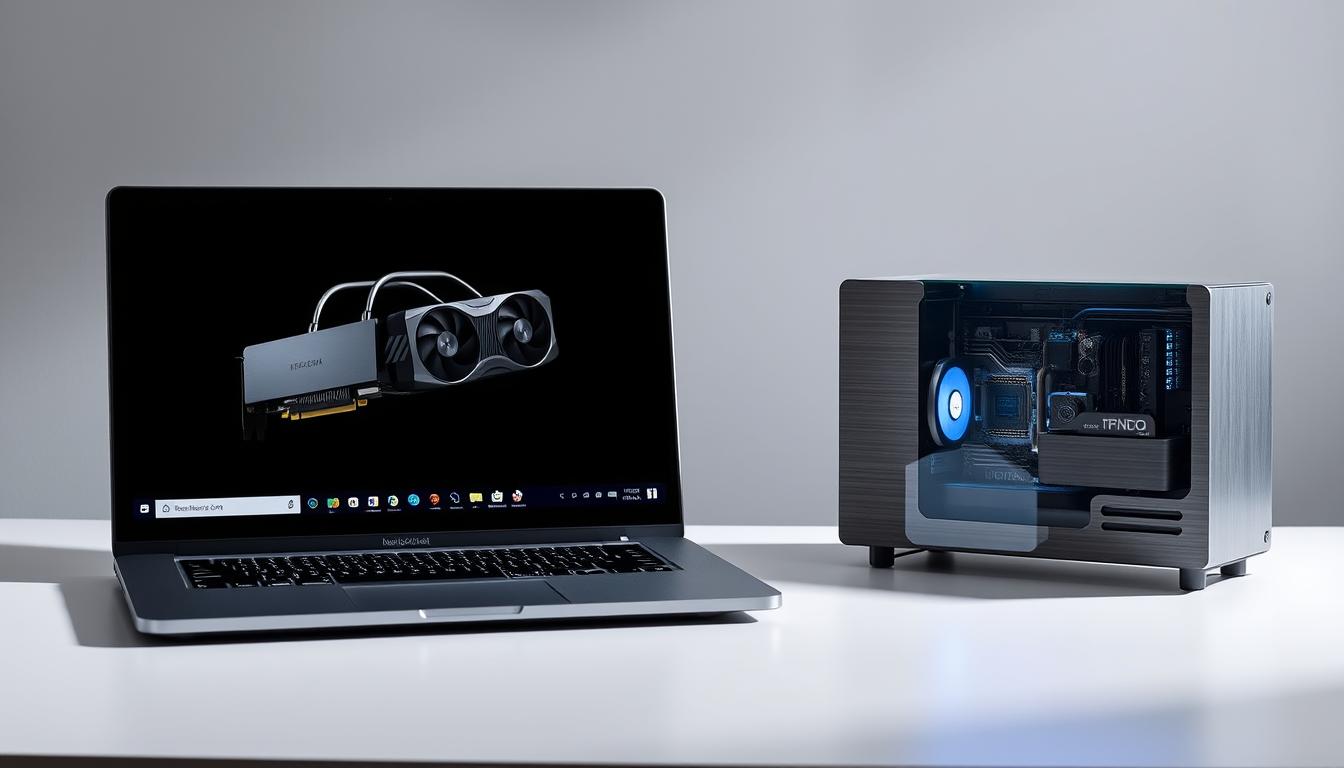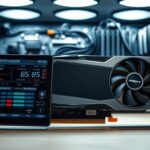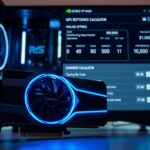Last Updated on August 13, 2025 by Gill
Remember when your laptop felt like a powerhouse? That crisp gaming session or seamless video edit now stutters like an old film reel. Frustration creeps in – but what if you could reclaim that performance without replacing your entire device?
Modern portable computers face a paradox. Manufacturers solder graphics processors directly to motherboards to save space, leaving users stuck with outdated hardware. For creatives and gamers, this often means choosing between portability and power.
Enter external graphics solutions. These compact docks connect through Thunderbolt ports, delivering desktop-class visuals to your existing machine. Imagine rendering 3D models or playing AAA titles smoothly – all while keeping your trusty laptop intact.
While premium gaming rigs like Alienware sometimes allow internal swaps, most devices need external options. Thunderbolt 3/4 technology now provides enough bandwidth to make this practical. The difference? You’re no longer chained to your hardware’s original limitations.
This guide walks through practical steps to boost your system’s capabilities. We’ll explore connection standards, performance expectations, and cost-effective strategies. Whether you’re designing, streaming, or battling virtual foes, there’s a path forward that honors both your budget and your machine’s potential.
Understanding Laptop GPU Limitations and Upgrade Options
The struggle with lagging visuals isn’t just about age—it’s rooted in how manufacturers build portable machines. Modern systems use two types of graphics processors: integrated and discrete. Both face unique challenges that limit their upgrade potential.
Integrated vs. Discrete: A Hardware Standoff
Integrated graphics share your laptop’s main memory and processing power. They’re fused directly to the motherboard alongside the CPU. This design saves space but locks performance at factory settings. Discrete options pack dedicated VRAM for better output, yet they’re still soldered in place with custom cooling.
When Physics Dictates Possibilities
Three factors crush upgrade dreams in most laptops:
- Space wars: Chassis designs leave zero room for larger graphics cards
- Thermal bottlenecks: Proprietary cooling systems can’t handle extra heat
- Power ceilings: Built-in batteries and adapters lack juice for high-end components
Manufacturers optimize each model’s thermal solutions and board layouts during production. What starts as efficient engineering becomes a permanent limitation for users. While some gaming rigs allow swaps, most mainstream devices stay locked to their original specs.
Evaluating Upgrade Feasibility and Compatibility
Assessing your system’s potential starts with understanding its architecture. Manufacturers rarely advertise upgrade graphics card options, but clues hide in technical specs and port layouts. Three elements determine whether your machine can handle better visuals: replaceable components, connection standards, and power delivery.
Checking Motherboard Design and Port Availability
First, investigate your device’s internal structure. High-end gaming models like Alienware’s Area-51m or MSI’s GT Titan series use MXM slots for swappable graphics card laptop modules. These resemble desktop PCIe slots but require specialized cooling solutions.
For most systems, Thunderbolt becomes the lifeline. Look for the lightning-bolt symbol near USB-C ports—this confirms Thunderbolt 3/4 support. Bandwidth here dictates whether external docks can unleash desktop GPUs without bottlenecks.
- MXM compatibility in premium gaming rigs
- Thunderbolt certification for external setups
- Power adapter wattage above 180W
Razer Blade laptops showcase smart engineering, blending sleek profiles with Thunderbolt 4 readiness. Always cross-reference your charger’s output against a new GPU’s demands—insufficient power causes crashes during intensive tasks.
Finally, check warranty terms before disassembling anything. Some brands void coverage if you tamper with hardware, while others encourage user upgrades. Documentation often reveals these policies in the “modifications” section.
Unlocking Hidden Graphics Potential
Ready to unlock hidden graphics power in your portable machine? Your path forward depends on two critical choices: modifying existing components or adding external muscle. Let’s map your options.
Internal Modifications vs External Expansion
Few laptops support internal GPU upgrades—most require opening the chassis. High-end gaming systems sometimes use MXM slots, but mainstream models typically lack this flexibility. Check manufacturer specs or user forums for your device’s capabilities.
External solutions offer broader compatibility. Thunderbolt 3/4 ports enable desktop-class performance through compact docks. These enclosures house standard desktop graphics cards, bypassing soldered-on limitations. ASUS ROG XG Mobile demonstrates how proprietary connectors can boost performance further.
Essential Tools and Safety Measures
For internal work, gather precision screwdrivers and anti-static gear. Clean workspace prevents dust infiltration. External setups need fewer tools but demand port verification—confirm Thunderbolt certification through system settings.
Always backup data before modifications. Create restore points for quick recovery if drivers conflict. Research enclosure compatibility—some work best with specific card laptop combinations. Brands like Razer Core X maintain broad GPU support lists.
Whether expanding internally or externally, patience prevents mishaps. Thermal paste applications require steady hands, while dock installations need proper cable management. Your machine’s second life awaits—choose your path wisely.
Steps for Replacing Internal GPU vs. Installing an eGPU
Choosing between internal modifications and external expansions depends on your device’s capabilities and performance goals. Modular systems offer rare upgrade opportunities, while external docks provide flexible power boosts for most machines.
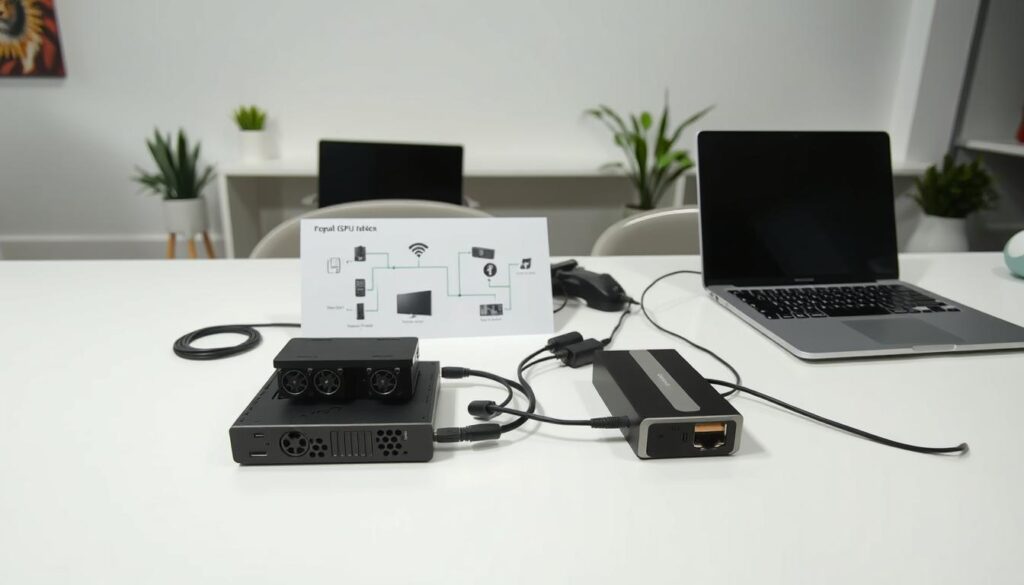
Modular System Graphics Updates
The Framework Laptop 16 revolutionizes component swaps with its expansion bay. Users can slide in AMD’s Radeon RX 7700S module using four Phillips screws—no soldering required. This modular approach maintains portability while enabling GPU upgrades every 12-18 months.
Disassembly requires precision:
- Ground yourself with anti-static wrist straps
- Remove rear panel screws in numbered sequence
- Disconnect battery before handling components
Dell’s Alienware Area-51m serves as cautionary tale—its swappable MXM modules became obsolete within a year. Always verify long-term manufacturer support before investing in proprietary systems.
External Performance Expansion
Thunderbolt 4 transforms any compatible laptop into a gaming powerhouse. Start by selecting enclosures like Razer Core X that match your card’s dimensions and power needs. Installation involves three key steps:
- Secure desktop GPU in the dock’s PCIe slot
- Connect via certified 40Gbps cable
- Install manufacturer drivers before first boot
ASUS ROG XG Mobile demonstrates hybrid potential, combining portability with RTX 4090-level performance through custom connectors. For optimal results, configure BIOS settings to prioritize external graphics over integrated chips.
Both paths demand research—check enclosure compatibility lists and modular component availability. While internal swaps suit high-end gaming laptops, external solutions democratize performance gains across devices.
Optimizing Graphics Performance and Thermal Management
Maximizing your system’s visual capabilities requires more than hardware changes—it demands smart management. Balancing raw power with thermal control transforms sporadic gains into sustained improvements.
Updating Drivers and BIOS for Optimal Operation
Start with software foundations. NVIDIA’s GeForce Experience and AMD Radeon Software automatically fetch critical updates, fixing bugs and boosting performance. These tools optimize settings for popular games and creative apps, tailoring outputs to your graphics card’s capabilities.
BIOS revisions often unlock hidden features. Recent Dell XPS models gained 15% better thermal headroom through firmware updates. Always check manufacturer support pages before modifying system firmware.
Enhancing Cooling and Power Supply Efficiency
Thermal management separates functional upgrades from melted potential. Consider these strategies:
- Undervolt using MSI Afterburner—reduce heat by 8-12°C without losing frames
- Pair cooling pads with elevated laptop stands for better airflow
- Monitor real-time stats through GPU-Z during intensive tasks
Power delivery often becomes the silent bottleneck. External GPU enclosures need dedicated circuits—a 300W adapter barely covers an RTX 4070’s spikes. For internal graphics cards, verify your charger meets minimum wattage requirements through manufacturer specs.
Proactive maintenance keeps laptop graphics running smoothly. Clean vents monthly with compressed air, and replace thermal paste annually for peak cooling efficiency. Your machine’s longevity depends on these small but crucial habits.
Navigating Potential Challenges and Risks
While boosting your machine’s capabilities seems straightforward, hidden hurdles often surprise users. Compatibility issues and warranty concerns can turn exciting gpu upgrades into frustrating experiments. Let’s explore common roadblocks before you commit to modifications.
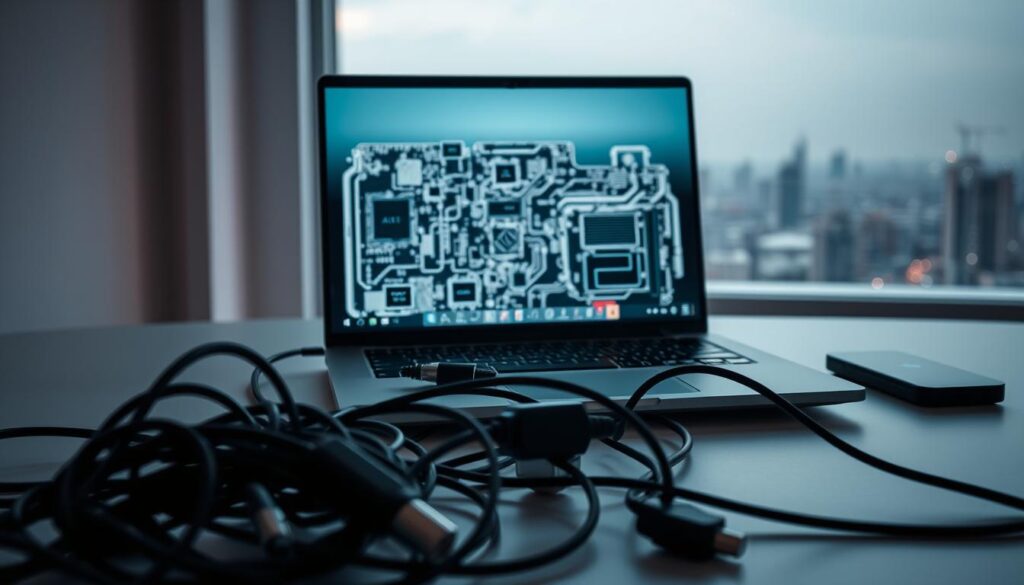
Performance Gaps and Policy Pitfalls
Thunderbolt connections create inherent limitations. Though convenient, they can’t match desktop PCIe bandwidth. This table shows why external setups often underperform:
| Feature | Thunderbolt 4 | PCIe 4.0 x16 |
|---|---|---|
| Bandwidth | 32 Gbps | 32 GB/s |
| Effective Speed | 4 GB/s | 32 GB/s |
| GPU Utilization | 70-85% | 100% |
Many manufacturers restrict upgrading laptop components through warranty terms. Dell and HP often void coverage if they detect third-party hardware. Always check service agreements before swapping parts.
Older cpu models struggle to keep pace with powerful external cards. A 10th-gen Intel chip might bottleneck an RTX 4070, wasting its potential. Driver conflicts also plague some laptops, especially those running Linux.
Consider these hidden costs:
- Enclosures costing $200-$400
- Separate power cables and adapters
- Potential need for cooling accessories
Portability takes a hit too. Your sleek notebook becomes a desk-bound workstation when paired with external gear. Still, understanding these limitations helps create realistic expectations for gpu upgrades.
Real-World Examples and Case Studies
Industry experiments reveal surprising truths about portable graphics upgrades. While some manufacturers push boundaries, others stumble over technical realities. Let’s explore what actually works through recent case studies.
Dell’s Cautionary Tale vs Framework’s Breakthrough
Dell’s 2019 Alienware Area-51m promised swappable graphics cards through MXM slots. Despite initial excitement, the R2 model abandoned this feature within a year. Users faced:
- Limited upgrade options due to proprietary cooling
- Rapid component obsolescence
- Class action lawsuits over false promises
In contrast, Framework’s Laptop 16 uses an expansion bay for AMD’s Radeon RX 7700S. This modular approach lets users swap gaming components without soldering. Early adopters report 62% better performance in 3D rendering tasks.
Performance Gains Through Next-Gen Connections
New connection standards are changing the external GPU game. Recent tests show OCuLink delivering 128Gbps bandwidth – double Thunderbolt 4’s capacity. This table compares current options:
| Standard | Bandwidth | GPU Utilization |
|---|---|---|
| Thunderbolt 4 | 32 Gbps | 78% |
| OCuLink | 64 Gbps | 92% |
| Thunderbolt 5 | 80 Gbps | 98% (est) |
Gaming benchmarks tell the story. Razer Blade 18 users saw framerate jumps from 45 to 112 FPS in Cyberpunk 2077 when pairing with an RTX 4090 via OCuLink. ASUS ROG Zephyrus models show similar gains, proving next-gen ports unlock true desktop potential.
These real-world data points highlight a crucial lesson: future-proof designs require flexible connections and modular thinking. While not every experiment succeeds, each failure paves the way for better laptop upgrades tomorrow.
Conclusion
Your laptop’s graphics potential isn’t set in stone—modern tech bridges the gap between portability and power. While internal GPU replacements remain impractical for most devices, external docks offer a practical path forward. These setups deliver desktop-level performance through Thunderbolt connections, though current bandwidth caps create some limitations.
New standards like Thunderbolt 5 and OCuLink-2 promise near-full graphics card utilization. Until then, carefully weigh costs: premium enclosures and desktop components often rival new gaming laptop prices. Creators needing maximum power might still prefer building a dedicated workstation.
Before investing, verify your machine’s port specifications and power delivery. User forums and manufacturer documentation reveal compatibility quirks. For casual gamers and designers, external solutions provide meaningful performance boosts without replacing trusted hardware.
The landscape keeps evolving. What seems cutting-edge today becomes mainstream tomorrow. Whether enhancing your current setup or planning future purchases, understanding these options empowers smarter decisions about portable graphics capabilities.
FAQ
Can I upgrade the graphics card in any laptop?
What ports do I need for an external GPU setup?
Will an eGPU void my laptop’s warranty?
How much performance gain can I expect with an eGPU?
Are cooling upgrades necessary for GPU upgrades?
Can I use an NVIDIA RTX 4090 with my laptop via an eGPU?
Do all games work seamlessly with external GPUs?
Is it cheaper to upgrade a laptop’s GPU or buy a new one?
- NVIDIA RTX 6000 Ada Generation 48 GB Bottleneck Calculation - October 17, 2025
- Optimize Your GeForce RTX 5070 Performance with Our Bottleneck Tool - October 2, 2025
- GeForce RTX 5090 Bottleneck Calculator: Optimize Your Setup - October 1, 2025

